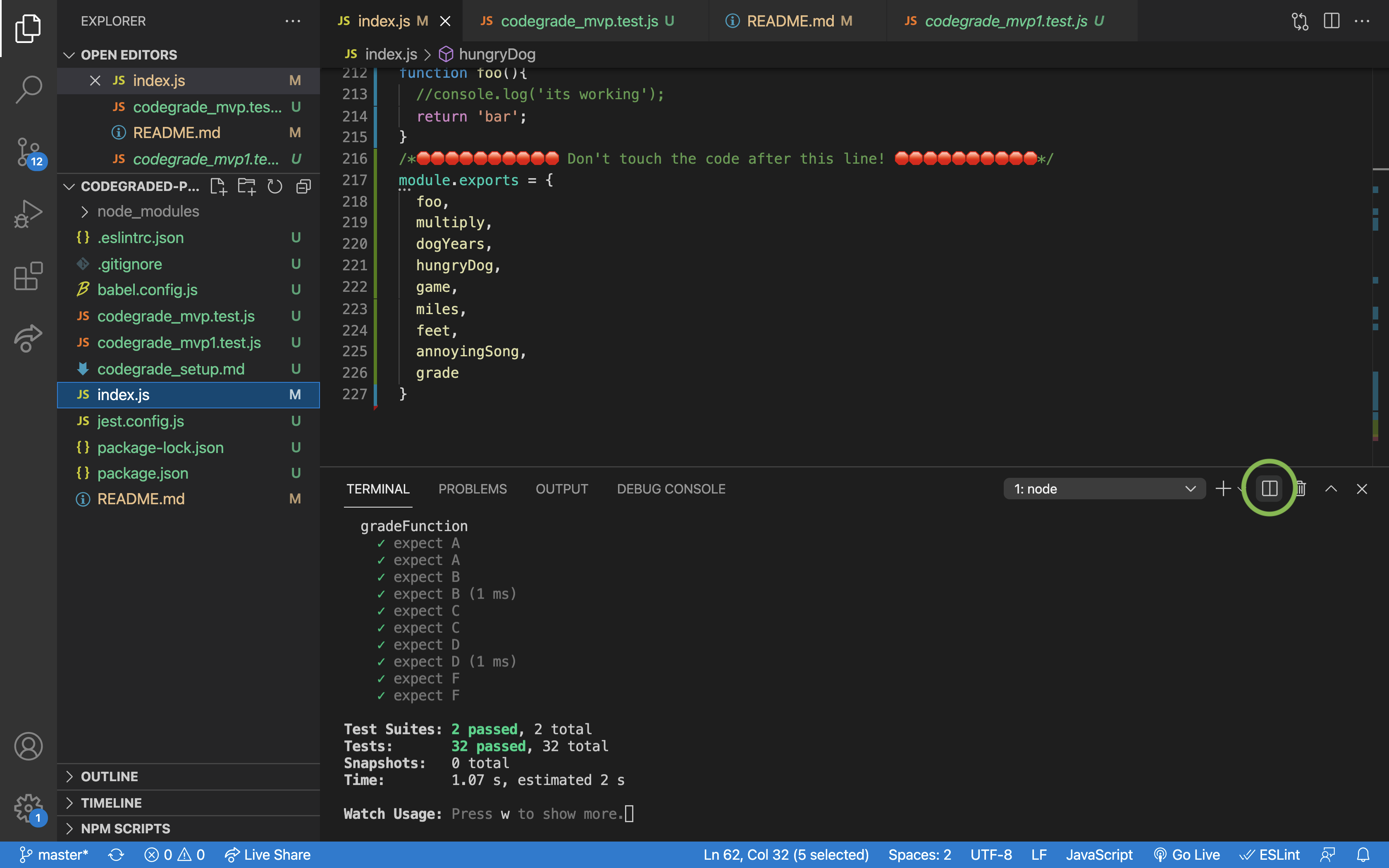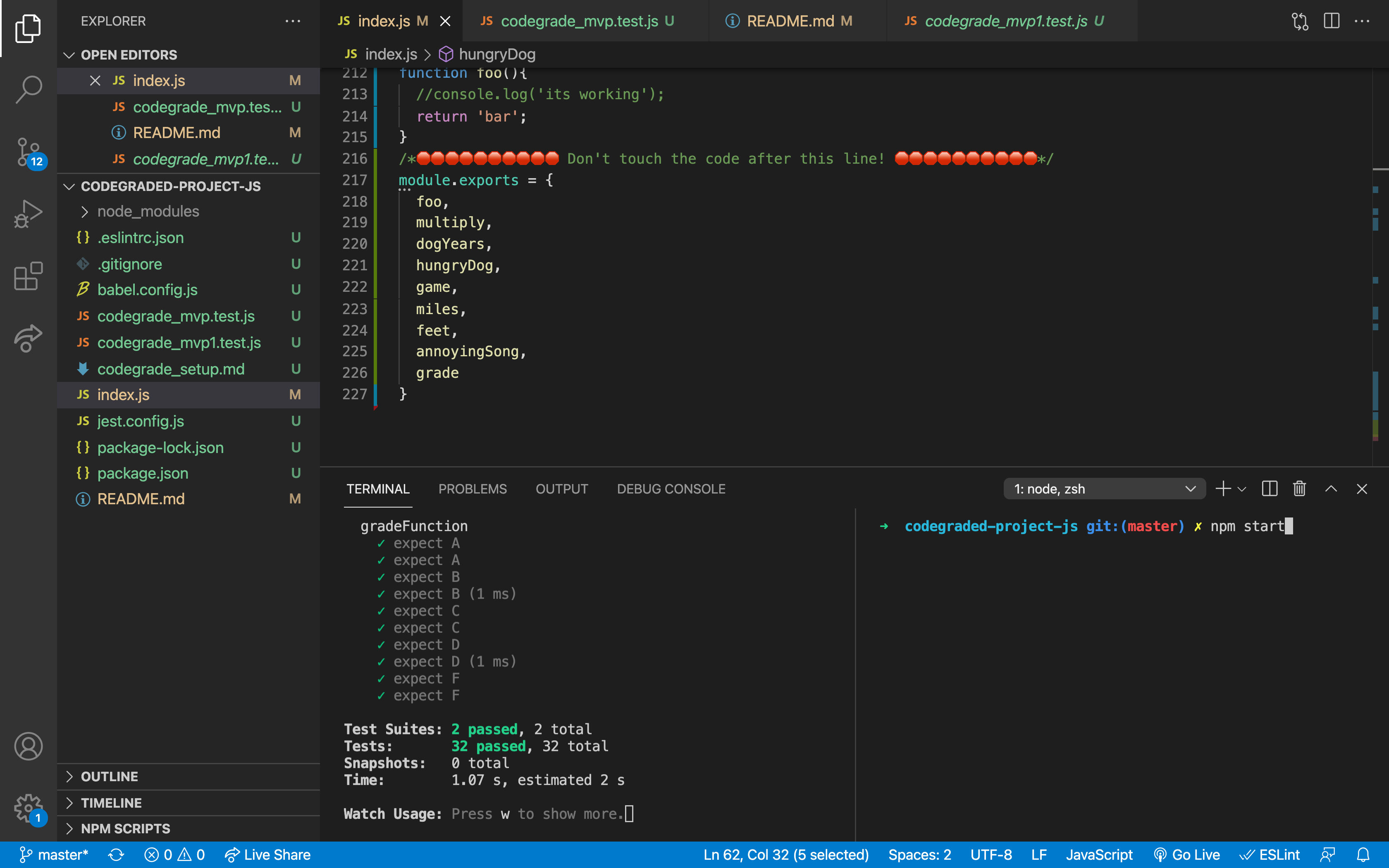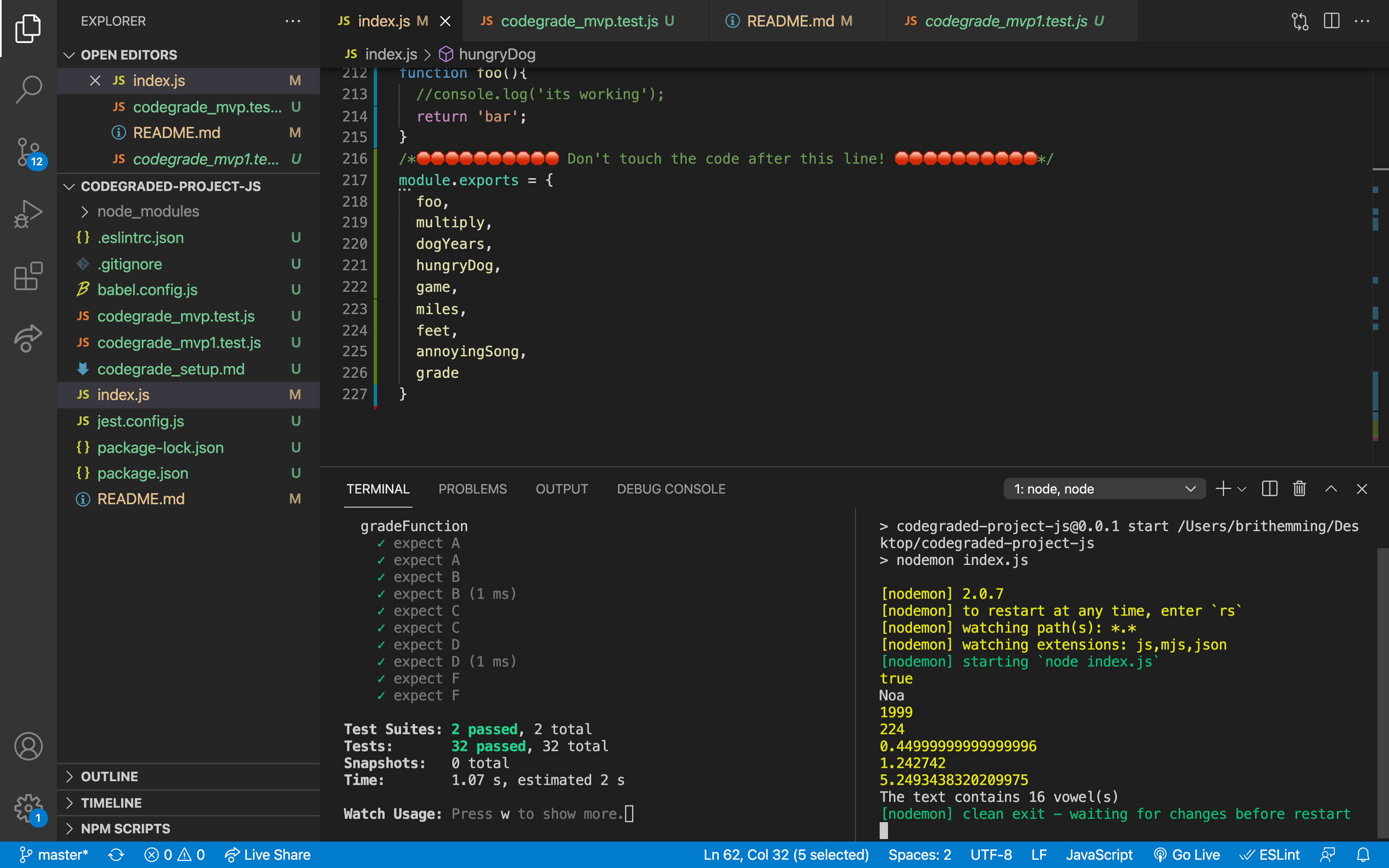Read these instructions carefully. Understand exactly what is expected before starting this Sprint Challenge.
This challenge allows you to practice the concepts and techniques learned over the past week and apply them in project. This Sprint explored JavaScript Fundamentals. During this Sprint, you studied array methods, this keyword, prototypes, and class syntax. In your challenge this week, you will demonstrate proficiency by completing a range of JavaScript problems.
This is an individual assessment. All work must be your own. Your challenge score is a measure of your ability to work independently using the material covered through this sprint. You need to demonstrate proficiency in the concepts and objectives introduced and practiced in preceding days.
You are not allowed to collaborate during the sprint challenge.
The index.js file contains all of your challenges. Please review it in full before answering the questions. If you complete the stretch goals please leave them in your file but commented out so that they do not affect the MVP tasks
In meeting the minimum viable product (MVP) specifications listed below, you should have all tests passing. You can console.log to check your work and ensure you are submitting the correct results
Set up codegrade early and commit your code regularly and meaningfully.
Demonstrate your understanding of this week's concepts by answering the following free-form questions.
Edit this document to include your answers after each question. Make sure to leave a blank line above and below your answer so it is clear and easy to read.
-
Explain the differences between
.map,.reduceand.filterand describe a use case for each. .map allows you to transfer the array by performing some function on each element and returns a new array. .reduce allows you to perform a function on each element of the and returns a single value. .filter allows you to filter array elements by some criteria (a boolean result) based on a function and returns the resultant items from the array. Use cases .map : With an array of numbers you can triple each element by using .map (element)=> { return element * 3;} .reduce: With an array of numbers you can get the sum of the elements by .reduce (prev, current) => prev + current; .filter: With an array of numbers you can return the numbers that are higher than some threshold by .filter (element) => { element > 2}; -
Explain the difference between a callback and a higher order function. A callback function is a function that's passed to a high order function (HOF) to be called within the (HOF). A higher order function receives another function as an argument.
-
Explain what a closure is. Is closure is when an inner function access the variables/data from out of its scope from an outer function.
-
Describe the four principles of the 'this' keyword. Window binding - Applies when no context is given to the 'this' keyword so it's binded to the window or global object. Implicit binding - Applies when 'this' is binded to the object that calls the function i.e. the object to the left of the . becomes 'this'. Explicit binding - Applies when we explicitly provide context to 'this' by using .call, .apply or .bind. .call will immediately invoke the function, .apply will invoke function and pass arguments as an array. .bind passes in argument 1 by 1 and returns a new function that can be invoked when needed. New binding - Applies when we use the new keyword the 'this' keyword inside that function is bound to the new object being constructed.
-
Why do we need super() in an extended class? We need this to call populate the attributes/properties of the parent class which will be inherited in the child (extended class).
You are expected to be able to answer questions in these areas. Your responses contribute to your Sprint Challenge grade.
Using VSCode and Command Line:
- Fork the repo
- Go into canvas and connect your reop to codegrade
- Clone your forked version of the repo
- DO NOT CREATE A BRANCH. You will be pushing your changes to the main/master today
- cd into your repo
- open the terminal in your vs code and type
npm install - next type
npm run testin your terminal - Complete your work making regular commits to main/ master your codegrade score will update each time you make a push.
Open a second terminal inside of your project by clicking on the split terminal icon

Inside of your second terminal type npm start

You will be running your tests in one terminal and debugging in the other. As you work on your code you should make use of console.log to check your progress and debug.

You must complete all tasks inside of index.js and answer the questions above.
In your solutions, it is essential that you follow best practices and produce clean and professional results. Schedule time to review, refine, and assess your work and perform basic professional polishing including spell-checking and grammar-checking on your work. It is better to submit a challenge that meets MVP than one that attempts too much and does not.
Please submit your project via codegrade by following these instructions See part 2, submitting an assignment with codegrade